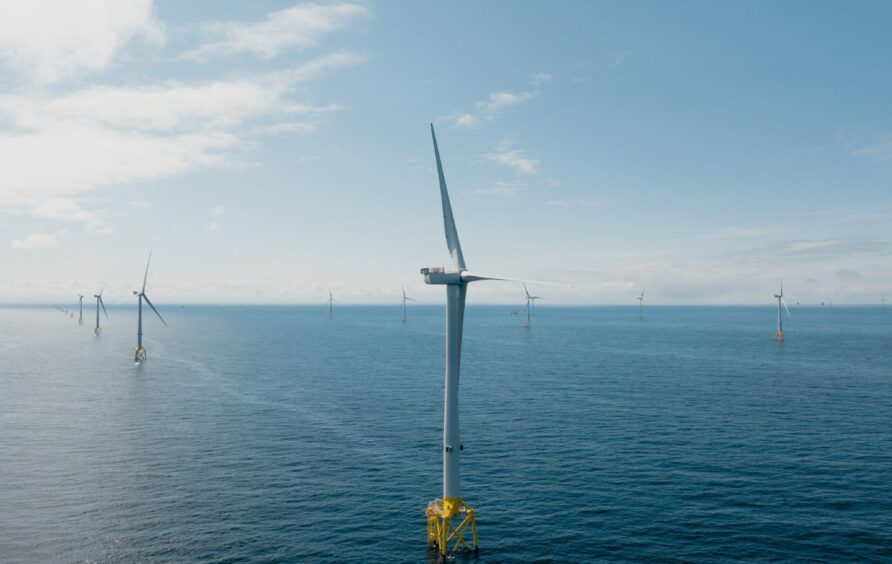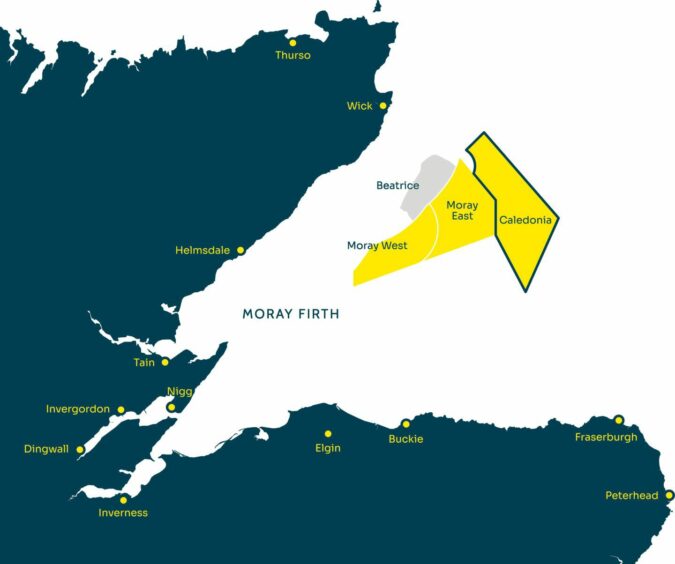
Developer Ocean Winds has filed its first major submission for the Caledonia offshore wind project with Marine Scotland, outlining plans and its environmental approach.
The Offshore Scoping Report outlines the technologies under consideration for developing the 2GW offshore wind site in the Moray Firth, which the developer secured in January as part of the ScotWind leasing process.
Formed in 2019, the company is a 50:50 joint venture by EDP Renewables (EDPR) and energy major Engie. Caledonia will be its third major Scottish project, with the Moray East and Moray West offshore schemes already under development.
Caledonia will be built in the NE4 Plan Option offered during the lease round – an area of around 166 square miles off with the northern limit approximately 14 miles from Wick and the southern limit around 24 miles from Banff – and directly adjacent to the Moray East and West zones.
Ocean Winds is targeting a capacity of 2 GW, based on a maximum of 150 wind turbines with capacities ranging from 14 to 25 megawatts (MW).
Although water depths in the array area vary from 40m to 100m, most of it is shallow enough to allow construction using fixed foundations already deployed in the Moray Firth.
Ocean Winds’ report suggests it this is the preferred, lowest cost and lowest risk solution, and suggests that around 75% of zone could be constructed using fixed foundations – though it says “this figure is likely to increase as technology advances.
Potential landfall locations for onshore export cables have been assessed along a stretch of coastline between Sandend Bay and Old Haven, for connection with the National Grid at New Deer.
The report also details the work that will be undertaken for the Environmental Impact Assessment which will support the planning application for the project, which is expected to be made in 2024.
It follows the commencement of a one-month seabed survey campaign last month, in which the Ocean Endeavour will collect geophysical data necessary to enable planning, layout and design of turbines and selection of optimal foundations for the site.
Once fully commissioned (expected in 2030), Caledonia will double the wind output from the Firth, supplying the average electricity needs of around two million homes.
Caledonia project director Mark Baxter said the submission – just nine months after the project was secured – marked “an important early milestone” in project development.
“The urgent need for new generation, low-cost energy capacity in the UK and Scotland has been prioritised by Governments, and Caledonia is ideally placed to deliver quickly,” he added.
“Caledonia’s Scoping Report comprehensively outlines the options being considered to develop the wind farm and the proposed approach to the project’s Environmental Impact Assessment. We have extensive knowledge, experience and relationships in the Moray Firth, and we look forward to engaging with the individuals, organisations and communities who have an interest in the project.”
The report is now open to consultation, and the developer will host a series of public events during November, including in Wick (7 Nov), Fraserburgh (9 Nov) and Buckie (10 Nov).
Recommended for you

 © Supplied by Ocean Winds
© Supplied by Ocean Winds